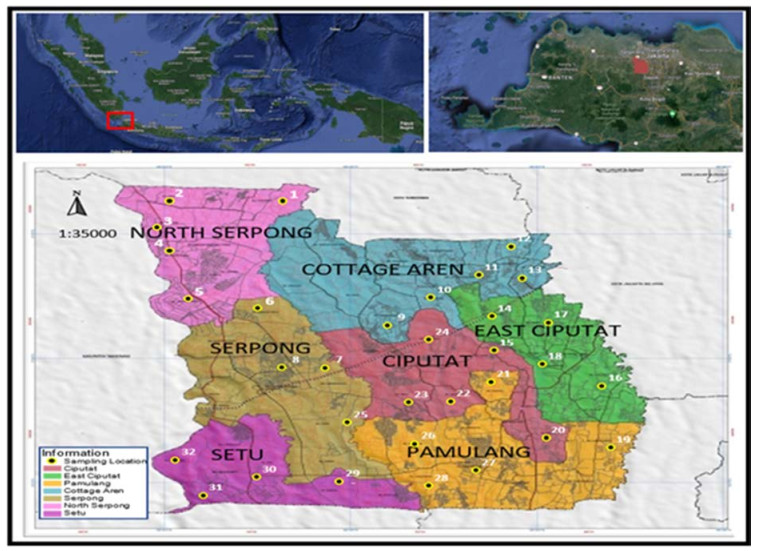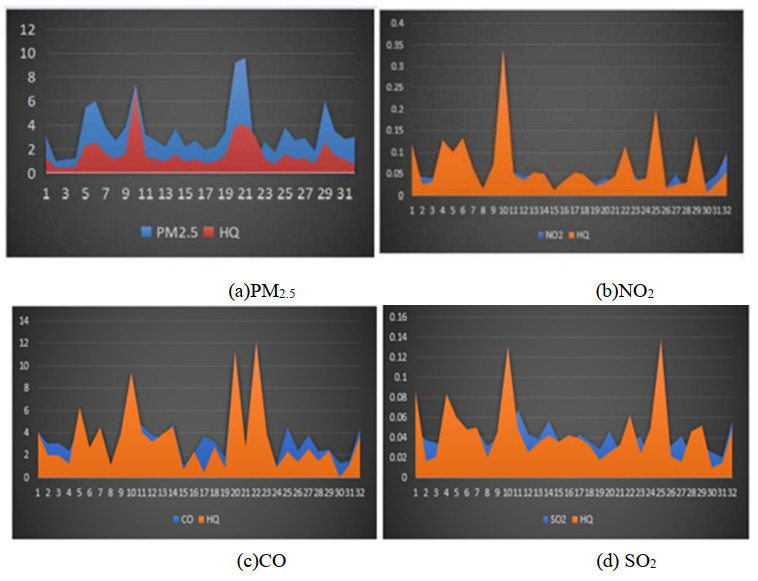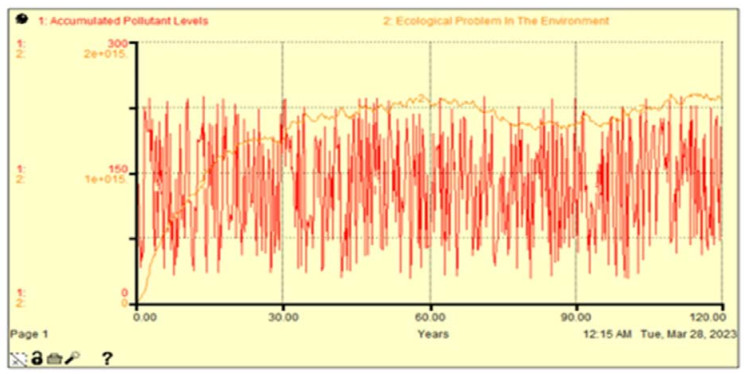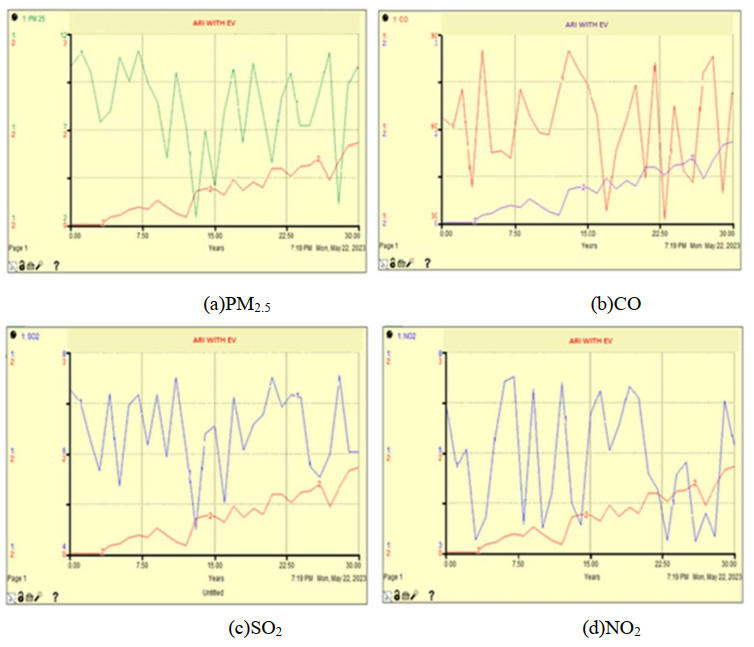1.
Introduction
The majority of cities worldwide now consider air pollution to be a serious public health concern [1,2,3,4]. Most of the air pollution is caused by the transportation sector. The transportation industry is vital to human activity and has an impact on the world economy [5]. For instance, the movement of people and things promotes economic growth, mobility, a sustainable way of life, and trade in local and international goods [6,7]. High ruates of economic expansion, rapid urbanization, rising disposable income, a wide range of social and recreational activities, an increase in private vehicles, and the distribution of different materials and resources have all contributed to an increase in demand for the transportation sector, which has resulted in deteriorating urban air quality [8,9].
Transportation-related vehicle emissions can have a big impact on both air pollution and climate change. Burning fossil fuels like gasoline and diesel results in numerous greenhouse gases and air pollutants, which are the source of vehicle emissions [10,11,12], that cannot be renewed [13,14,15]. Almost 14% of the total Greenhouse Gas (GHG) emissions in 2016 came from the transportation sector, this sector has greatly impacted global GHG emissions [16]. Without an effective policy and program for decarbonization, the transportation sector's GHG emissions are predicted to rise faster than those of the other sectors, from 7.2 GtCO2e in 2010 to 12.8 GtCO2e in 2050 [17]. 80% of the air pollution in metropolitan areas comes from transportation [18].
Vehicle emissions consist of particulate matter (PM), nitrogen dioxide (NO2), sulfur dioxide (SO2), and carbon monoxide (CO) [19,20]. Most vehicle emissions emit 61 % carbon monoxide (CO), 53 % nitrogen dioxide (NO2), 17 % volatile organic compounds, and 13 to 15 % particulate matter (PM2.5 and PM10) [21,22]. In 2019, more than 90% of the European urban population was exposed to concentrations of nitrogen dioxide (NO2) and particulate matter (PM) with diameters smaller or equal to 2.5 μm [23]. Indonesia experienced the same situation; more than 90% of its transportation is by road [24]. Peak vehicle emissions in the morning and evening [25].
Ambient air toxic levels that are known or suspected to cause cancer in people or animals are influenced by motor vehicle emissions. Non-cancerous health issues include harm to the nervous, cardiovascular, respiratory, reproductive, or immune systems can also result fromexposure to air toxics. Vehicle emissions have a negative impact on human health and environment [26,27]. The incidence and mortality of numerous diseases are both accelerated by vechicle emissions [28,29]. Particulate matter has been linked to rising incidence of lung cancer, ischemic heart disease, chronic obstructive pulmonary disease (COPD), asthma, and stroke [30,31]. Children who experience prenatal illnesses as a result of air pollution may later experience delayed neuro development, which may have an impact on their performance in later life [32,33].
In Beijing, China, both short-term and long-term exposure to vechicle emissions is linked to cardiovascular and respiratory conditions, early mortality, and a higher chance of developing cancer [34]. In Canada, rectal cancer has an OR of 1.98 and colorectal cancer has an OR of 1.65 when exposed to CO, NO2, and PM2.5 from diesel engines for 10 years [35]. A significant association was found between an increase in the interquartile range of PM2.5 (36.0 g/m3), NO2 (29.0 g/m3), SO2 (9.0 g/m3), and CO (0.6 mg/m3) over the 0 to 24 hours prior to commencement and, correspondingly, greater chances of the beginning of acute coronary syndrome (ACS) of 1.32%, 3.89%, 0.67%, and 1.55% [36].
In China, the frequency of Metabolic syndrome (MetS) in children and adolescents is strongly correlated with long-term exposure to PM2.5, PM10, and NO2. MetS prevalence will rise by 2.8% for every 10 g/m3 increase in PM2.5, PM10, and NO2 [37]. Hospitalization for cardiovascular disease (CVD), coronary heart disease (CHD), and cerebrovascular disease (CBV) in Boston correlates strongly with PM2.5 and NO2 levels [38].
SO2 undergoes a reaction with air and water vapor, resulting in the formation of sulfuric acid, which subsequently precipitates onto the ground through rain. This process has the potential to harm ecosystems by acidifying bodies of water and soil, as well as damaging plants, animals, and structures. In addition, NO2 can also cause acid rain [39]. An increase in PM2.5 can have a negative impact on plants that are disturbed to photosynthesize because the stomata on the leaves will be closed [40,41]. CO contributes to air pollution and the creation of smog when it is discharged into the atmosphere [42].
The city of South Tangerang is a densely populated area, an industrial area, an area with rapid trade growth, and an increasing number of modes of transportation that pollute the air. The city in Indonesia with the highest average annual pollution level is South Tangerang City. The number of vehicles in South Tangerang City in 2017 was 34,732 with the largest composition being public transportation [43]. Based on air quality in South Tangerang, PM2.5 is 260 g/m3. This condition is very unhealthy so that a mitigation strategy is needed for air management in South Tangerang so that it does not have a negative impact on health and the environment. The dynamics of pollutants in the urban environment must be thoroughly understood in order to develop strategies and policies to reduce the negative consequences of air pollution exposure. The purpose of this study is to determine the amount of pollutant concentrations that pose a risk to health and the environment and to develop a strategy for mitigating pollutants caused by vehicle emissions.
2.
Materials and methods
2.1. Study Design
This study uses observational analytics with a cross-sectional design and the STELLA dynamic model approach to predict health risks and situations. STELLA is good for predicting environmental health risks in the next few years by creating scenarios to produce strategies to overcome problems that occur. Data was taken from 32 points in 7 sub-districts in South Tangerang City (North Serpong, Serpong, Pondok Aren, Ciputat, East Ciputat, Pamulang and Setu) in March 2023. The samples used were population and environment. The population sample was 128 respondents with the criteria of being active and living near the main road in the South Tangerang City area. While, environmental samples consist of PM2.5, CO, NO2, and SO2 emission gases during 24 hours, as shown in Figure 1.
2.2. Data analysis
This study uses a dynamic model to determine health and environmental risks due to vehicle emissions based on several variables that influence mitigation strategies in South Tangerang City. The dynamic modeling approach provides problem solving with methods and tools that can identify, analyze, simulate and design systems with interrelated components that are formulated across scientific disciplines and complement each other [44].
STELLA is used to model the exposure of vehicle emissions to health and environmental risks for 30 years from 2022 - 2053. The initial stage for predicting health and environmental risks is entering vehicle emissions data (PM2.5, CO, SO2 and NO2), then modified by meteorology in the form of temperature and wind speed and direction in South Tangerang City. The next stage enters the HQ value and the average number of upper tract infection cases. Apart from that, population and vehicle density data are used so that the modeling results are well validated.
2.3. Ethics approval
The ethical permit guidelines number [1645/UN4.14.1/TP.01.02/2023] granted by Hasanuddin University was followed in conducting this study. A written informed consent process was used.
3.
Results
3.1. Health risk assessments
Several factors affect the level of concentration and distribution of pollutants in South Tangerang, namely, population density, causing vehicles to pass by and more human activities that trigger air pollution, the large number of motorized vehicles causes high exhaust emissions, many factories and industries, which causes the emission of pollutants such as CO, NO2, SO2, PM2.5 and South Tangerang has a flat topography and coastal area, including to river and sea that win blew those pollution entered to water body and accumulate either in the water and may enter tosediment. The number of vehicles is a factor that greatly influences the concentration of air pollution due to motorized vehicle emissions. People now have a greater propensity to acquire private vehicles as a result of rising income levels, which is why the number of motorized vehicles is still rising. Each motorized vehicle emits some exhaust emissions that don't all meet the motorized vehicle's exhaust emission standard [45]. Emissions that do not meet standards will have a negative impact on human health. Increased vehicle emissions are significantly associated with increased human health risks, shown in Figure 2.
3.2. Ecological risk assessments
Ecological risk is the possibility of unwanted ecological impacts on the environment. The accumulation of SO2, NO2, CO, and PM2.5 in South Tangerang has ecological risks and causes a significant total burden of environmental pollution in the form of negative effects on air quality, ecosystems and human health. The results of SO2, NO2, CO, and PM2.5 pollutant modeling for 30 years in South Tangerang are shown in Figure 3.
Figure 3 shows the accumulation of SO2, NO2, CO, and PM2.5 pollutants can have a significant impact on the ecological conditions and the total burden of environmental pollution in South Tangerang. The findings of projections show that emissions of SO2, NO2, CO, and PM2.5 will negatively affect the environment throughout a 30-year period, starting in 2022 and ending in 2053.
3.3. Environmental health risks and mitigation strategies
The results of health and environmental risk analysis with predictions for the next 30 years showed that the highest pollutant levels were CO with an HQ value > 1, then the second highest risk was pollutants with PM2.5 levels with an HQ value > 1. These polluting gases can cause problems with the respiratory tract and have systemic toxic effects. The use of vehicle fuel with a high sulfur content can also cause acid rain.
One of the efficient mitigation strategies that can be used to effectively control urban air pollution and lessen its detrimental effects on human health is better urban planning. using electric cars (EV) as a form of transportation to lessen exposure close to roadways. By using stella, an effective mitigation strategy scenario to reduce health and environmental risks is electric vehicles as shown in Figure 4.
By implementing smart transportation such as electric vehicles, it can reduce vehicle emissions thereby reducing the negative impact on health and the environment. Figure 4 shows the reduced risk of ARI after 30 years with the adoption of electric vehicles.
4.
Discussion
4.1. Health risk assessments
Non-carcinogenic and carcinogenic health risks due to exposure to SO2, NO2, CO, and PM2.5 in SouthTangerang using a Hazard question. If the HQ value is more than 1, then the possibility of non-carcinogenic health risks increases. Figure 2 shows the concentration of pollutants PM2.5, NO2, SO2, CO, and hazards in South Tangerang City which pose a risk to human health. From the graph, it can be seen that PM2.5 and CO pose health risks to humans because the HQ value exceeds 1. The average concentration of PM2.5 is 37 µg/m3 with HQ 1.644, NO2 is 0.04 µg/m3 with HQ 0.067, CO is 3.404 µg /m3 with HQ 3.315, and SO2 of 0.03 µg/m3 with HQ 0.044. Even though HQ NO2 does not exceed 1, this gas has an effect on humans. Exposure to NO2 in the long term will have a detrimental effect on breathing and even cause death [46] Similar in NewYork City, such as Buffalo, Detroit, Phoenix, and Tuscon, which showed an increase in children's asthma cases in hospitals [47] NO2 is linked to an estimated 637,000 new cases of childhood asthma in China (Hu et al. 2022). The same thing applies to SO2 concentrations which affect human health. Exposureto SO2 for an extended period of time worsens respiratory symptoms and impairs lung function [48]
Emissions from motorized vehicles are one cause of PM2.5 pollution. Emissions from combustion of gasoline, oil, diesel fuel or wood produce much of the PM2.5. Pollution found in outdoor air, as well as a significant proportion of PM10. These particles can irritate and inflame the tissues of the lungs and respiratory tract when they reach the human respiratory tract, which raises the risk of contracting acute respiratory infection (ARI) [49].
Air pollutants lead to increased susceptibility to respiratory infections and the development of asthma [50]. Long-term exposure to SO2, CO pollutants can result in a number of health issues, including cancer, heart disease, eye irritation, and respiratory issues. Particularly for vulnerable populations including children, the elderly, and those in poor health. In north China, SO2 and PM2.5 had the biggest impact on lung cancer especially women (q = 0.154 in females) [51]. Similary to Maros, Sensitivity analysis revealed that exposure length (27.0%) and PM2.5 concentration (25.7%) were the main contributors to health hazards in both adults and children [52].
Mean maximum PM2.5 in Northern Spain were 12 g/m3, with a morning high of 17 g/m3, and a nocturnal peak of 1 g/m3 greater. PM2.5 pollutants in Malaysia have 5 times the risk of suffering from lung adenocarcinoma with OR = 5.69, 95%. CI 3.14-7.21 and death from lung cancer [34]. The City of Atlanta saw a 0.4% (95% CI 0.0%, 0.7%) increase in visits hospitals for all cardiovascular diseases for every 1 g/m3 rise in PM2.5 from vehicle emissions [53].
Pre-eclampsia (n = 1,880, adjusted odds ratio = 1.07 [95% confidence interval = 1.01, 1.14]) and pregnancy-induced hypertension disorders (n = 2,430, adjusted odds ratio = 1.07 [1.01, 1.13]) were linked with an elevated risk of pre-eclampsia at 10-g/m3 of NO2 exposure during the first trimester [54]. The findings imply that up to 687 (or 38% of all) pediatric asthma cases in Bradford each year may be brought on by NO2 [55].
A significant risk factor for gestational diabetes mellitus (GDM) in pregnant women in China is extended exposure to air pollution, particularly exposure to CO and SO2 in metropolitan areas. Studies have suggested that this exposure may increase insulin resistance in pregnant women[56,57].
4.2. Ecological risk assessments
Air pollution from sources like SO2, NO2, CO, and PM2.5 greatly impacts the environment. The ecosystem surrounding the exposed region can be harmed by pollution accumulation. Pollutants can have a harmful impact on plants, animals, and other species when exposed over time. A decrease in agricultural output and harm to plants are both effects of SO2. These contaminants have the potential to hinder plant growth, destroy blooms and leaves, dry up the soil, and harm plant roots. Additionally, SO2 has the ability to dissolve in water and produce sulfuric acid, which has negative effects on aquatic life and ecosystems [58,59,60,61].
Another gas that might harm the environment is NO2. This nitrogen dioxide can contribute to acid rain, which harms vegetation and plants. Reduced plant nourishment, lowered soil pH, and plant death can all be caused by acid rain [62]. CO has an impact on air quality and causes tropospheric ozone to develop, which can harm vegetation and lower agricultural productivity [63,64].
More than any other pollutant, PM2.5 can significantly negatively influence the ecosystem. These particles may adhere to plant leaves and stems, inhibiting photosynthesis and limiting plant growth. Additionally, PM2.5 particles have the ability to travel great distances and impact local air quality. The ecosystem and biodiversity in the area may be impacted by this [65].
4.3. Environmental health risks and mitigation strategies
Due to their zero exhaust emissions, electric vehicles (EV) are frequently seen as a greener option to conventional cars, especially in densely populated inner cities. [66]. In the area surrounding Tampa, the county's exposure to CO, NO2, and SO2 pollution as well as its ambient concentrations and emissions of those pollutants were reduced by fully electrifying the automobile fleet.[67]. Air pollutants that contribute to cancer, cardiovascular and respiratory disease, and other illnesses will be decreased by employing EVs that are common in cities [68].
Electric vehicles are an alternative to the utilization of renewable generating resources so that it needs to be expanded through smart charging and vehicle services [69,70,71]. Several countries that have successfully implemented electric vehicles widely with vehicle services are demonstrated in Shanghai, Guangzhou and Spain [72,73].
By promoting the use of electric or other low emission vehicles as a more ecologically friendly alternative to fossil fuel vehicles, South Tangerang may promote the development of a smart city by implementing risk mitigation techniques for both health and the environment. These measures could include lowering the operating costs of electric vehicles, creating extensive battery charging infrastructure, and providing tax breaks or subsidies for buying electric vehicles.
5.
Conclusions
Health hazards associated with exposure to SO2, NO2, CO, and PM2.5 in South Tangerang using a Hazard question. The HQ value of SO2, NO2, CO, and PM2.5 pollutants in South Tangerang has increased to more than 1, which poses a risk to human health. CO and PM2.5 gases also pose a significant health risk with HQ values of 3.315 and 1.644, respectively. Environmental conditions and the overall burden of pollution in South Tangerang will be significantly impacted by the buildup of SO2, NO2, CO, and PM2.5 pollutants over the ensuing 30 years. Environment-harming air pollutants like SO2, NO2, CO, and PM2.5 have a significant influence. Accumulated pollution can affect ecosystems near vulnerable regions. If plants, animals, and other species are exposed to pollutants over time, they may suffer negative consequences. By encouraging the use of electric or other low emission vehicles as a more environmentally responsible substitute for fossil fuel vehicles, South Tangerang may support the growth of a smart city by putting into practice risk mitigation strategies for both health and the environment.
Electric vehicles provide numerous advantages for both the environment and public health. In addition to having zero emissions while driving, EV also save money on operations, use less fuel, improve environmental quality, and might be qualified for tax breaks and other benefits. Even while the initial cost of some electric automobiles may be higher, the long-term advantages make the investment worthwhile.
Use of AI tools declaration
The authors declare they have not used Artificial Intelligence (AI) tools in the creation of this article.
Acknowledgments
The authors thank all Doctoral Public Health Lecturers at Hasanuddin University, and the KEHATI Laboratory for providing appropriate CO and SO2 sampling and analysis. This research did not use grant funds.
Conflict of interest
The authors declare no conflict of interest










 DownLoad:
DownLoad:






